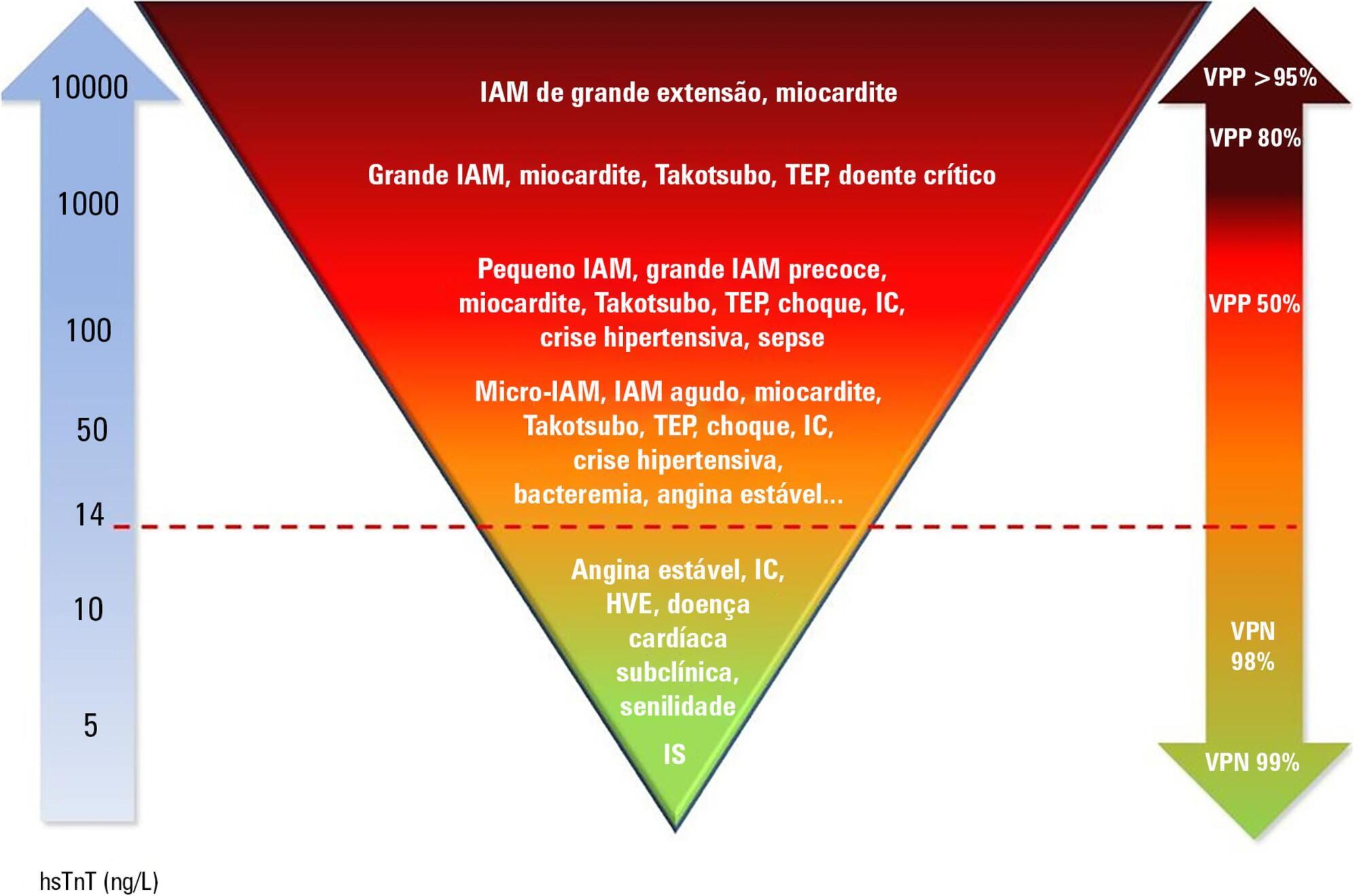Abstract
Rev Bras Ter Intensiva. 2019;31(1):93-105
DOI 10.5935/0103-507X.20190001
Cardiac troponins T and I are considered highly sensitive and specific markers for the diagnosis of acute myocardial infarction. Currently, a series of nonprimary cardiac abnormalities may manifest as an elevation in high-sensitive assays. The reduction in their detection limits has allowed earlier diagnosis and the use of evidence-based therapeutic measures; however, this characteristic has increased the spectrum of detectable noncoronary heart diseases, which poses challenges for characterizing acute coronary syndromes and creates a new role for these tests in known disorders in intensive care units, especially sepsis. Management of patients through a greater understanding of how these markers behave should be re-evaluated to ensure their correct interpretation.

Abstract
Rev Bras Ter Intensiva. 2007;19(2):216-220
DOI 10.1590/S0103-507X2007000200013
BACKGROUND AND OBJECTIVES: Myocardial contusion is often associated with blunt chest trauma. Its diagnosis is challenging to the professionals who work in emergency department due to nonspecific symptoms and the lack of auxiliary exams with enough accuracy to diagnose. Among the available diagnostic tools, the biomarkers of myocardial injury troponin I and troponin T have stood out. Troponins are proteins of the citocellular apparatus, released into the bloodstream only after the disruption of myocytes cellular membrane. Therefore they are highly specific to detect myocardial injuries. CONTENTS: We performed a clinical review using the electronic databases MedLine and LILACS from January 1980 to November 2006 about the importance of a serial measurement of troponin I and T as a diagnostic tool as well as predictor of unfavorable clinical outcome in patients with myocardial contusion after a blunt chest trauma. CONCLUSIONS: Although troponins I and T are more specific than usual biomarkers CKMB and CK, these two first biomarkers show a low sensitivity and positive predictive value to diagnosis myocardial contusion. Patients with ECG abnormalities, troponins elevations or both should remain in an intensive care unit (ICU) for at least 24 hours, period in which they cam develop most of the complications related to myocardial contusion.
Search
Search in:
Case reports (56) Child (53) Coronavirus infections (34) COVID-19 (46) Critical care (115) Critical illness (54) Extracorporeal membrane oxygenation (26) Infant, newborn (27) Intensive care (72) Intensive care units (256) Intensive care units, pediatric (31) mechanical ventilation (38) Mortality (76) Physical therapy modalities (28) Prognosis (61) Respiration, artificial (119) Respiratory insufficiency (26) risk factors (34) SARS-CoV-2 (28) Sepsis (98)